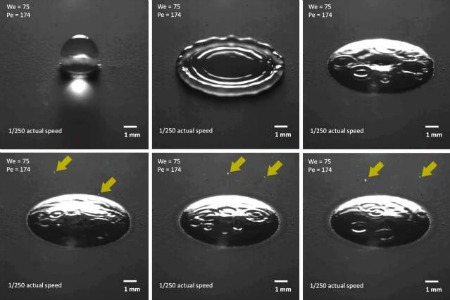If you’ve ever wondered why you can smell when it rains, it seems as though scientists have cracked the code.
In a recent study published in Nature Communications, MIT researchers revealed the source of the rain fragrance as petrichor---aerosols released once rain fall hits the soil. As neat as that may be, researchers are now conducting experiments to see whether that same mechanism could be spreading dangerous bacteria in the atmosphere.
The big revelation about the rain fragrance came from filming raindrops in slow motion, microseconds at a time.
Upon review of the film, it was observed that the raindrops released fine bursts of liquid that were suspended in gas after the rain fell.
Those fine bursts of liquid, which are aerosols, float off into the wind and spread that distinctive rain smell.
Heavy rain conditions doesn’t result in more petrichor, light or medium rainfall hitting porous surfaces like wet soil are the ideal conditions for the aerosols to be released. That perfect formula is what’s said to release the plant oil and bacteria mingled in the dirt.
The phenomenon is compared to the aerosols that are released by champagne bubbles as they give champagne its unique taste and smell.
Youngsoo Joung, a postdoctoral student who worked on the petrichor research, said this discovery will offer a lot of insight into other research, particularly how other microbes and chemicals inside soil might impact the environment and people through the aerosol effect.
James Bird, a medical engineering assistant professor at Boston University told the Washington Post that the study could shed light on why microbes from the soil can be found higher in the atmosphere.
Joung and a fellow graduate student are now conducting experiments with soil that has pathogens like e. coli to see whether rainfall can significantly spread these contaminants. Joung believes this will aid in protecting the environment and preventing the spread of microorganisms from nature to humans.
For more about petrichor and aerosols, visit this link:
http://newsoffice.mit.edu/2015/rainfall-can-release-aerosols-0114

